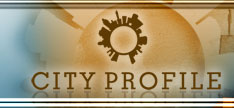The Society Hill?s history dates back to 1683, just a year after William Penn founded the city of Philadelphia. Penn conferred the southern area of the city to a London development company called Free Society of Traders who set their company?s flag to stand on the ground high above Dock Creek. Its surrounding area became known as ?the Society?s Hill?. This neighborhood has been in existence for more than 300 years but due to its decline, the community was revived in the 20th century and was renamed simply Society Hill.
Bounded by the Walnut, Lombard, Front and 8th streets, the Society Hill was considered the most pleasing and charming community in Philadelphia. Most of the architectural designs evident in the surrounding are original 18th and 19th century brick row houses in Federal and Georgian style bordering the streets covered with cobblestone.
The Society Hill was an ideal place for business at the time of its establishment and became an abode for affluent citizens of Philadelphia. Establishments like market halls, taverns, churches and synagogues were constructed in conjunction with the brick houses of those well-off families. Brick warehouses were also built along the river in the community. Piers were put up to accommodate the growing trade in the city. Small factories soon became part of the everyday scene in the area.
However, in the 19th century, the city of Philadelphia?s commercial district expanded westward and was concentrated on the axis of Market and Broad streets. From the mid-19th to the mid-20th century, the Society Hill lost its appeal and slowly deteriorated. Houses started to weaken, some buildings were demolished, brick warehouses became outdated and depreciated and old piers went out of use and decomposed since it could no longer provide service to larger modern vessels.
On the bright side, Society Hill did not become totally dilapidated. Some important institutions stood the test of time. The Philadelphia Contributionship can still be seen on the Fourth Street. Churches and synagogues stayed active in their historic buildings, although with moderated congregations. Historically-significant houses were repaired by occupants or taken over by the Philadelphia Redevelopment Authority and sold to individuals who agreed to refurbish the exteriors. The Powel House, the impressive dwelling of the city's mayor both before and after the Revolutionary War, had become a house museum. To augment the colonial atmosphere of the community, replicas of 18th-century street lights and brick sidewalks were added. Parks, walkways, and modern townhouses replaced demolished edifices and decorated empty lots. Some old buildings were converted for use as wholesale food market. The Athenaeum, a private library founded in 1814, does remain in the district.
One of the best development plans that took place in Society Hill was the establishment of the 31-story Society Hill Towers and low-rise buildings that were totally completed in 1977. Residents of the society may bring their children to the General George A. McCall School for grades Kindergarten through 8th or the Saint Peter?s School, considered to be the most exclusive private elementary school in Philadelphia. For high school students, the Furness High School accommodates them. All these schools are situated inside the Society Hill neighborhood, a district listed on the National Register of Historic Places in 1971.
| |



